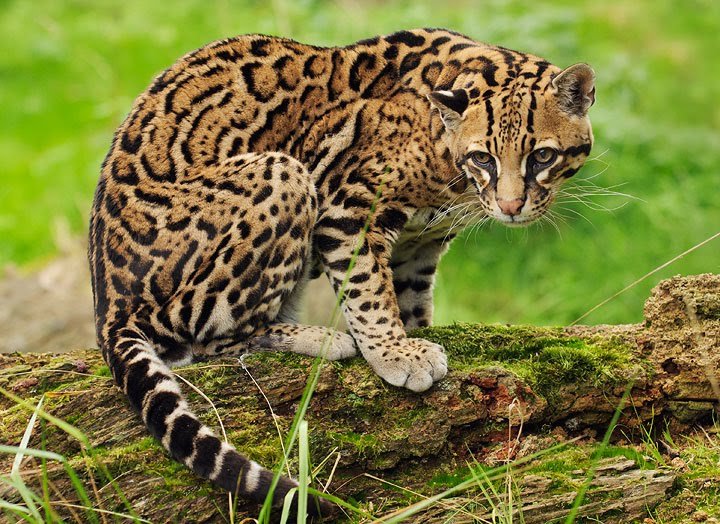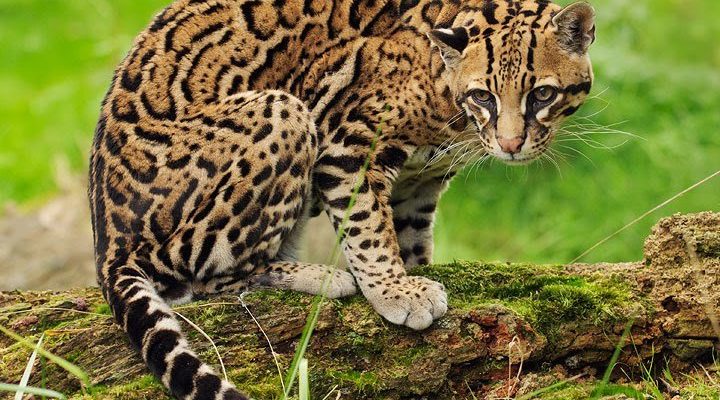
Imagine sitting by a cozy fire, sipping a hot drink, while discussing how animals inspire cultural representations. The ocelot offers a perfect example of how nature influences stories and beliefs. From ancient civilizations to modern-day narratives, the ocelot’s charm has found its way into the hearts and minds of many. Let’s explore how this captivating creature is portrayed across different cultures, turning it into much more than just a beautiful animal.
The Ocelot in Indigenous Mythology
Many indigenous cultures have revered the ocelot as a symbol of strength, agility, and cunning. In the myths of Mesoamerican civilizations like the Aztecs and Mayans, the ocelot is often depicted as a mysterious creature, embodying the spirit of the jungle. These cultures viewed the animal as a guardian of the forest, protecting it from harm.
For example, some stories tell of the ocelot as a guide for lost souls, leading them safely back to the living world. This connection to the supernatural highlights the reverence these cultures had for wildlife. It’s like the ocelot represents a bridge between humanity and the wild, reminding us of our place in nature.
Moreover, the ocelot’s unique markings have inspired traditional art forms. Many artisans incorporate the animal’s likeness into carvings, textiles, and pottery, connecting their crafts to the spiritual world. It’s a beautiful reminder that the ocelot is not just an animal; it’s a cultural icon that inspires creativity.
Stories and Folktales Featuring the Ocelot
Folktales often serve as a vehicle for sharing wisdom and morals, and the ocelot is no exception. In many cultures, tales featuring the ocelot highlight themes of cleverness and survival. These stories often teach important lessons, like the value of wit over brute strength.
One popular folktale involves the ocelot outsmarting larger predators, emphasizing that intelligence can triumph over size. This narrative resonates with readers, reminding us that sometimes, brains are mightier than brawn. It’s like that classic underdog story where the smallest hero saves the day by using their smarts.
Additionally, these tales often serve as cautionary messages about respect for nature. When ocelots outwit humans or other animals, it encourages listeners to maintain a harmonious relationship with wildlife. It’s a gentle nudge to appreciate the balance of nature, showing that every creature, big or small, plays a vital role in the ecosystem.
The Ocelot in Art and Literature
Artists and writers have drawn inspiration from the ocelot’s distinct beauty and mystique. In visual arts, the ocelot’s stunning coat has become a popular motif in paintings and textile designs. Its spots can symbolize individuality and the unique patterns of life, making it a favored subject for those expressing their creativity.
In literature, authors have used the ocelot as a character representing freedom and wildness. Many nature writers describe the ocelot’s movements with vivid imagery, captivating readers and evoking a sense of wonder. The ocelot becomes more than just a character in a story; it embodies the spirit of the untamed wilderness.
Moreover, the ocelot is often a symbol of endangered species in conservation literature. Its depiction serves as a reminder of the fragility of our ecosystems and the importance of protecting these majestic animals. By sharing the story of the ocelot, writers advocate for greater awareness and action toward wildlife conservation.
The Ocelot’s Role in Modern Media
Today, the ocelot continues to capture the imagination through movies, documentaries, and even video games. These representations often highlight the ocelot’s role in biodiversity and conservation. Documentaries focusing on wildlife often feature this beautiful creature, showcasing its habitat and behavior in stunning detail.
In films, the ocelot is sometimes portrayed as a fierce, stealthy predator. This representation can create a connection between audiences and the animal, fostering a deeper appreciation for its role in the ecosystem. It’s like seeing a glimpse of the wild, reminding us of the importance of preserving these environments.
Video games have also embraced the ocelot, using it as a character or symbol of agility and stealth. By immersing players in the ocelot’s world, developers create an engaging experience that allows players to learn more about this fascinating feline while having fun.
Symbolism and Spiritual Significance of the Ocelot
In many cultures, the ocelot carries significant symbolism. It often represents resilience, adaptability, and independence. Many believe that encountering an ocelot in dreams or nature can signify a call to trust one’s instincts and embrace the wild spirit within.
The ocelot’s nocturnal nature adds to its mystical aura. In various cultures, it’s seen as a guardian of the night, embodying secrets and the unknown. This connection to the night invites people to reflect on their shadows and what lies beneath the surface of the conscious mind.
Additionally, the ocelot is sometimes viewed as a totem animal, guiding individuals on their life journeys. People who resonate with the ocelot might find strength in its qualities, using them as inspiration for personal growth and exploration. It’s a reminder that we can all channel the spirit of the ocelot in our lives.
Conservation Efforts and Cultural Impact
The ocelot’s cultural representation raises awareness about the importance of conservation. As habitats shrink and threats to wildlife increase, stories and symbols surrounding the ocelot can inspire people to protect these magnificent animals.
Organizations often use the ocelot as a mascot in their campaigns, emphasizing the need for biodiversity and habitat preservation. This clever marketing taps into the animal’s charm, encouraging people to support conservation efforts through donations and volunteer work.
By showcasing the ocelot in various media and cultural representations, we can bridge the gap between humanity and nature. Understanding the ocelot’s role in our stories reinforces the importance of wildlife, encouraging a collective responsibility to protect both the animal and its habitat.
In conclusion, the ocelot is much more than just a beautiful cat; it is a symbol steeped in culture and folklore. From ancient myths to modern media, the ocelot serves as a reminder of nature’s beauty and complexity. As we continue to share its stories, we foster a deeper connection to wildlife, inspiring future generations to protect these incredible creatures and their habitats.

